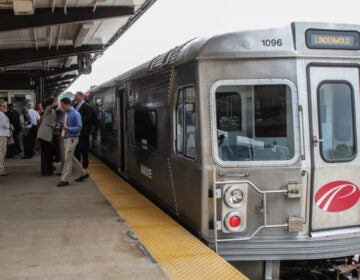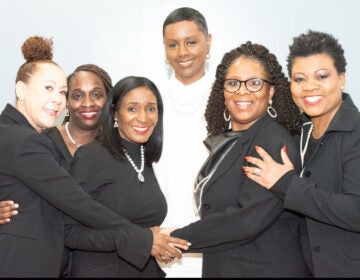In Princeton, actions speak louder than words when demonstrating dangers of drunk driving
Students were silent as Gary Snyder, principal of Princeton High School, read student Catherine Huber’s “obituary.”
For Huber’s friends and fellow students, it all seemed real. But Huber didn’t really die; instead she was playing the part of the victim in a crash reenactment staged the day before prom to show students the dangers of drunk driving.
“It was surprisingly emotional, even with knowing it wasn’t real. I was very tearful,” parent Janet Eisenberg said. Eisenberg’s son, Jacob, played one of the students in the car driven by the drunk driver.
According to Candice Singer, research policy analyst for the National Council on Alcohol and Drug Dependency (NCADD), a Youth Risk Behavior Survey from 2009 shows students in New Jersey have experienced binge drinking at a slightly higher average than students nationwide. According to the survey, 26.7% of New Jersey students experienced binge drinking compared to the 24.2% national average.
Dealing with the problem in New Jersey
Princeton High School is dealing with the problem by trying to show as realistically as possible the consequences of drinking and driving.
The crash reenactment was coordinated by Wendy Jolley of Princeton Drug and Alcohol Alliance and board member of Corner House, a Princeton-based agency involved in prevention, education and support for young people and their families regarding issues of substance abuse.
Principal Snyder opened the reenactment by telling the students that “this is a community that cares about you and hopes that this is a message and a lesson that you learn and take seriously over the next hours, days, weeks, months and years.”
Six teenagers from area schools were involved in the crash reenactment, one couple in the first car and two couples in the second car that included the drunk driver.
The staged crash involved two cars in a head-on collision, with one young woman in a prom dress lying on the roof of the first vehicle, bloodied. The whole scene was covered with a tarp, and a hush fell over the crowd when police officers removed it.
The 911 call was played over a loudspeaker as was the subsequent narrative by Greg Paulson, Deputy Director of Princeton First Aid and Rescue Squad.
Capital Health paramedics arrived to provide advanced life support, cardiac monitoring, IVs, breathing tubes, and medication, performing a cardiogram on the “deceased patient” on top of the car to confirm that there was no heart activity and provide for pronouncement of death.
The crash reenactment ended with Huber zipped into a body bag by morticians from Hodge Funeral Home, and the “drunk driver,” played by PHS student Handy Pierre, given a field sobriety test and arrested.
“Kids come up to me after an event saying I will never drink and drive, and I will make sure my friends won’t either. In past years we have even had kids faint and have had to take them to the hospital. There’s no talking, no laughing, the kids take it very seriously,” said Jolley.
“They know that this is something they shouldn’t do — high school kids do drink, but if we can keep them safe, we’ll do it. Kids have said ‘I don’t want to drive to the prom, let’s take a limo’, and their parents say, ‘absolutely’ to keep them safe.”
Are crash reenactments working?
Other towns in central New Jersey have their own crash reenactments. According to Corner House Executive Director Gary DeBlasio, Lawrence Township not only stages a crash reenactment but follows it with a mock trial of the underage DWI defendant.
According to Sergeant Thomas Murray of Princeton Township Police, so far in 2012 there has been only one underage drunk driving arrest that resulted in an arrest and conviction. For Princeton Borough, Officer Nicholas Sutter said that there were five arrests in 2011 but only one underage drunk driving arrest for 2012.
In 2010, there were 298 arrests for underage drunk driving in New Jersey, according to The Century Council. However, underage drunk driving fatalities that same year decreased by 65%, and underage drunk driving fatalities have declined 57% nationally from 1991 to 2010.
New Jersey has seen nearly a 78% decrease since the 1983 decision to raise the drinking age to 21.
WHYY is your source for fact-based, in-depth journalism and information. As a nonprofit organization, we rely on financial support from readers like you. Please give today.




